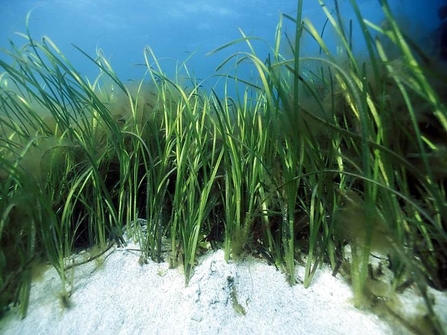Seagrass habitats are found across the UK and play and essential role in fighting the increased atmospheric carbon emissions. Looe’s large seagrass bed performs an important role within the fight against climate change, as such the habitat requires continual monitoring to understand changes in the beds size and health.
Work resulting from a partnership between the Looe MCG, Cornwall Wildlife Trust, and the University of Plymouth has revealed that the seagrass beds of Looe Bay cover approximately 1.1km2 of seabed, an area equivalent to 157 football pitches.
The beds stretch from Hannafore in the West to Millendreath in the East, and offer shelter to a diverse range of ecologically important marine animals and plants.
These include cuttlefish and stalked jellyfish, the latter being one of the reasons why a 52km2 Marine Conservation Zone (MCZ) was designated in 2013.
The MCZ designation also requires that the seagrass beds are maintained in ‘favourable condition’, enabling them to function as an essential nursery ground for commercial fish species and helping to store carbon, a vital component in tackling the climate crisis.

